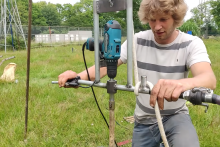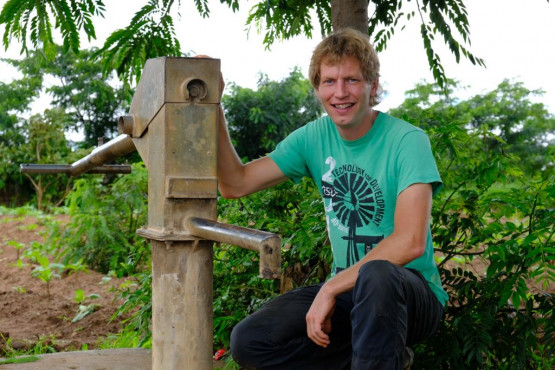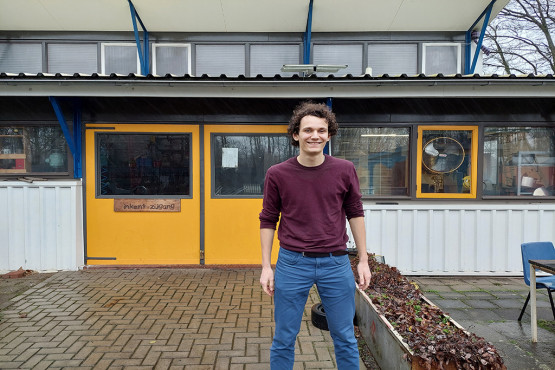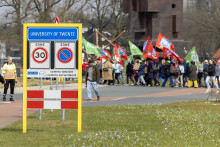Last October, WOT published the video on YouTube. Since then, the number of views has been growing steadily towards 1 million. These are enviable viewing figures, even for the more famous influencers among us. ‘I am surprised, just like everyone else’, says Mechanical Engineering alumnus Menno-Jan Rietema, designer of the system and star of the fifteen-minute video. ‘I’m getting text messages from several family members. Even colleagues in Zambia had watched the video and mentioned it, without me ever drawing their attention to it.’
Meaning
Rietema calls from Malawi, where he is involved in development aid. His passion for this was born years ago on the WOT site, close by the Horst, where he recorded the video last summer with WOT board member and Master’s student Mechanical Engineering Allard Braakhuis. According to Braakhuis, the YouTube success did not come out of the blue. ‘Since last year, I have been seriously working on our YouTube account. It had existed for some time, but little was done with it. Now we have this video and an earlier video that is approaching 650,000 views. Yes, it is special and cool to see what kind of audience we suddenly reach. It gives a lot of meaning to what we do as WOT.’
Balancing act
The key to their success? ‘With videos like these, it’s a balancing act: it has to be both entertaining and informative’, Braakhuis explains. ‘And it shouldn’t be too tedious either, I learned that from the bigger YouTubers. It is especially important to make decisions while editing the video.’ According to Rietema, there are many DIY enthousiasts worldwide who are interested in digging wells. ‘Especially in the United States, there are many people who want to be self-sufficient. This is such a solution for DIY-ers. You do need a little more sophisticated equipment than the average home handyman has in his shed, but with a decent workshop you can go a long way. And I think the creative combination of a drill and a well appeals to people in particular.’
Menno-Jan Rietema (in Malawi) and Allard Braakhuis (on campus, at the WOT site).
Purpose
It is the typical work of WOT, as Braakhuis explains. ‘We have over seventy members – some thirty of them active. On the one hand, we can put the theory from the lecture halls into practice here; we design and build mainly water supply systems, but also focus on electronics and wind energy, for example. These systems can be used in developing countries. We also train community development workers to apply such techniques. Many students start with us because they want to experiment, but gradually they become more interested in the philanthropic side.’
This is especially true for Rietema. The fact that he has now been busy for months in East Africa drilling wells and assembling rope pumps originated with the WOT. ‘As a graduated mechanical engineer, it is actually very easy to find a job, recruiters bombard you with jobs every day, so to speak. But then you end up in a big company and you’re mainly busy optimising existing processes. I never had the feeling that this was really improving the world. I was looking for more purpose, I really wanted to mean something to people.’
On the map
That is going well for him in Malawi. ‘I can combine all aspects of mechanical engineering with working in the field. Above all, I can help the local communities here.’ Remarkably, he has had the system he demonstrates in the video shipped to Malawi. ‘I want to get to work on it in the coming weeks. I'm curious.’
The recent YouTube success leaves the student and alumnus wanting more. ‘Perhaps – when I return from Africa – we can record more videos together. It puts WOT on the map, digitally’, says Rietema. Braakhuis is up for that. ‘We have more ideas than time, haha. Maybe more members will want to get involved.’
In any case, new doors are opening for the WOT. ‘We will soon be making a video call to someone from Sierra Leone, who is interested in the system shown in the video. Hopefully we will be able to help her. How awesome would it be if the systems we develop here were to end up in countries like this?’








